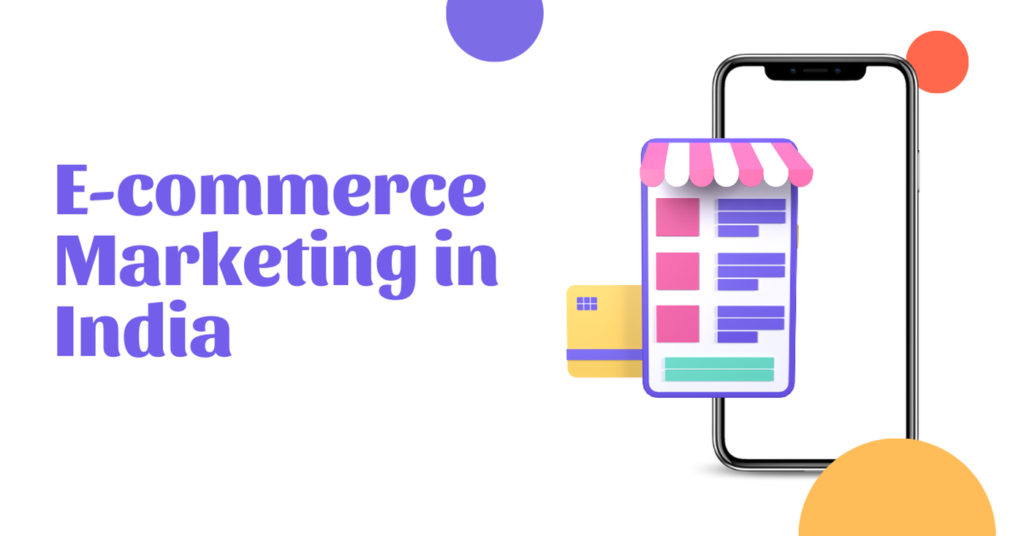The Indian e-commerce market is booming. By 2025, it is expected to reach $188 billion. With millions of consumers shifting online, businesses have unprecedented opportunities. However, success in e-commerce marketing is not just about being present; it’s about being strategic, understanding the market, and using the right tools.
Understanding the Indian E-commerce Landscape
India is a diverse country with over 1.4 billion people, including a rapidly growing internet user base. The rise of affordable smartphones, cheaper data rates, and improved logistics have all contributed to the success of online shopping platforms. Consumers, especially from smaller towns and cities, have embraced digital marketplaces like never before.
Key factors that drive the Indian e-commerce sector include:
- Diverse Demographics: India’s population is young. Over 50% of the population is under the age of 30. This age group forms the largest segment of online shoppers.
- Rural Market Potential: While urban areas are saturated with online services, rural regions remain largely untapped. With increasing internet penetration, these areas offer immense growth opportunities.
- Mobile Commerce: A significant chunk of online shopping happens via mobile devices. India has over 700 million smartphone users, making mobile optimization essential for e-commerce businesses.
Marketing Strategies that Work in India
To thrive in the Indian market, e-commerce companies must use tailored marketing strategies. Here are a few proven approaches:
1. Localizing Your Content
India is a multilingual country. English may work in metropolitan cities, but rural areas prefer regional languages. Brands that create content in local languages gain more traction. Offering a website or app interface in regional languages can significantly boost engagement.
2. Social Media Marketing
Social media plays a pivotal role in driving traffic to e-commerce websites. Platforms like Facebook, Instagram, and WhatsApp dominate the Indian social media space. In recent years, video content has gained massive popularity. Short-form videos on Instagram Reels and YouTube Shorts are a hit among users.
Actionable tips:
- Use influencers and content creators to promote your products. Collaborate with influencers from various regions who speak the local language and understand the culture.
- Share user-generated content. Encourage satisfied customers to share photos and videos of your products. This boosts credibility and attracts more buyers.
3. Search Engine Optimization (SEO)
SEO is a game-changer for Indian e-commerce websites. Ranking higher on Google can bring organic traffic to your site. With millions of people using Google to search for products, brands must focus on optimizing for search engines.
SEO Best Practices:
- Use long-tail keywords. Indian consumers often search for products using descriptive terms. Optimizing for these keywords helps you capture more traffic.
- Focus on local SEO. Many shoppers search for local services or products. Ensure your website is optimized for location-based searches to increase visibility.
4. Mobile-First Approach
With the majority of users accessing e-commerce platforms via mobile phones, ensuring that your website is mobile-friendly is essential. A slow-loading or clunky website can drive potential customers away.
Mobile marketing strategies:
- Invest in a responsive design. Your site should adapt to different screen sizes and offer a seamless shopping experience.
- Leverage SMS marketing. Indian consumers are accustomed to receiving promotional texts. SMS campaigns can drive immediate traffic to your website or app, especially during sales or festive seasons.
5. Festive and Flash Sales
India has a vibrant calendar filled with festivals, and each presents an opportunity for e-commerce brands to offer discounts. Whether it’s Diwali, Holi, or Independence Day, Indians love shopping during these times. Flash sales with limited-time offers create urgency and encourage impulse buying.
Maximizing Festive Sales:
- Offer exclusive discounts. Make sure your deals are competitive and relevant to the ongoing festival.
- Create themed marketing campaigns. Tailor your ads and promotions to resonate with the festive spirit. Highlight how your products can be part of the celebration.
Emerging Trends in E-commerce Marketing
1. The Rise of Voice Search
With the growing popularity of voice assistants like Alexa, Siri, and Google Assistant, voice search is becoming more common in India. Optimizing your e-commerce platform for voice search can give you a competitive edge.
2. Omnichannel Marketing
While online sales are booming, Indians still prefer the convenience of shopping both online and offline. Brands that offer an omnichannel experience allow customers to interact with them on multiple platforms – whether it’s through a physical store, website, app, or even social media.
3. Video Commerce
Videos are a powerful tool for e-commerce marketing. With platforms like Instagram and YouTube being widely used, businesses are exploring live streaming and video-based selling. Product demonstrations, unboxing videos, and reviews help build trust and persuade consumers to make a purchase.
4. Artificial Intelligence and Personalization
AI-powered tools allow businesses to personalize their user experience. From chatbots that provide instant customer support to personalized product recommendations, AI enhances the customer journey.
Overcoming Challenges in Indian E-commerce Marketing
While the Indian e-commerce market is full of potential, it comes with its own set of challenges. Some of these include:
1. Logistics and Delivery
India’s vast geography can make logistics challenging, especially in rural areas. To win customer trust, companies must offer reliable and fast delivery options.
2. Payment Options
Though digital payments have increased, cash-on-delivery (COD) remains popular in India. E-commerce platforms must offer multiple payment options, including COD, UPI, credit/debit cards, and wallets like Paytm and Google Pay.
3. Building Trust
Indians tend to be skeptical when shopping online. Trust plays a big role in their purchase decisions. To build trust, offer easy return policies, showcase customer reviews, and provide clear product descriptions.
Conclusion
E-commerce marketing in India requires an understanding of the unique consumer behavior and market dynamics. As businesses continue to grow, success lies in adopting digital-first strategies, leveraging social media, optimizing for mobile, and offering a seamless customer experience. By staying ahead of trends and localizing your approach, you can capture the attention of this fast-growing market.
visit us : https://digitalsolutiontech.com/
visit our LinkedIn: https://www.linkedin.com/company/digitalsolutiontech/

